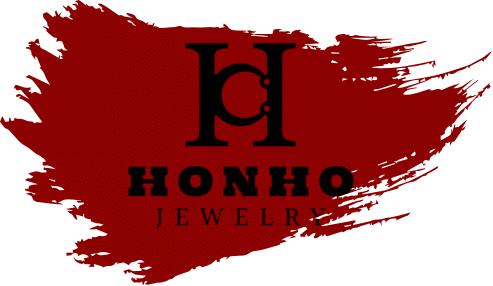Fine jewelry: What makes a piece quality, valuable and unique?


What Is Fine Jewelry?
Fine jewelry includes jewelry made of precious metals such as gold, silver, or platinum that often has real gemstones (diamonds, rubies, and sapphires) and precious gemstones (such as emerald). While in comparison fashion jewelry is temporary, fine jewelry is built for the long term; to be worn every day and hold its value over time.
Fine Jewelry: Essential Features
- Precious Metal: Gold (14k, 18k, and so on), sterling silver (92.5% pure), platinum, or other precious metal
- Real, Natural Gemstones: Contain natural diamonds, rubies, emeralds, sapphires and other precious or semi-precious gemstones
- Hallmarks: Engraved marks showing metal purity (i.e., “14k,” “925,” “PLAT”)
- Craft: For the most part, not mass-produced but rather made with careful painstaking attention to detail
- Durability: With the proper care, can last generations
- Value Retention: Tends to hold on or appreciate in value over time
Fine Jewelry vs. Fashion Jewelry
Fashion jewelry (also known as costume jewelry) has a different purpose than fine jewelry does:
| Fine Jewelry | Fashion Jewelry |
|---|---|
| Made from precious metals (gold, silver, platinum) | Made from base metals (brass, copper, aluminum) |
| Contains genuine gemstones | Contains simulated stones, glass, or plastic |
| Designed to last for generations | Designed for temporary trends |
| Can be repaired when broken | Usually cannot be repaired |
| Can be resized (rings) | Cannot be resized |
| Retains value | Has little to no resale value |
| Higher price point | Lower price point |
This range of jewelry — each heavy (and helpful) piece, of course, has a spectrum, from fashion jewelry to exclusive high jewelry
Jewelry market segmentation type:

Fashion/Costume Jewelry
- Non-precious materials Used
- Mass-produced
- Follows current trends
- Affordable price point
- Not made to last
Demi-Fine Jewelry
- Closes the space between fashion and fine jewelry
- Commonly uses vermeil or plating methods (precious metal coating over cheaper base)
- Конечно вряд ли включает в себя настоящие материалы
- Less expensive than fine jewelry
- Higher quality than fashion jewelry but not as long lasting as fine jewelry
Fine Jewelry
- Made from precious metals
- Contains genuine gemstones
- Expertly crafted
- Durable and repairable
- Retains value
- Higher price point
High Jewelry
- The best in jewelry craftsmanship
- Showcases the rarest and most exquisite gemstones
- Usually unique or limited edition items
- Designed by well-known designers or fashion houses
- Which is the pinnacle of artistry and exclusivity
- Highest price point
Which many think of as investment pieces
Caring for Fine Jewelry

Although durable, fine jewelry needs proper care:
- Cleaning with appropriate methods on a regular basis
- Keeping it in proper storage away from other jewelry
- Take off when doing things that may cause damage
- We have capabilities of professional inspection and maintenance
- Having proper insurance in place
Fine Jewelry as An Investment.
Fine jewelry is an investment for a few reasons:
- Said precious metals and gemstones generally appreciate
- Quality craftsmanship increases the value of a piece
- May serve as family keepsakes or heirlooms
- Shall have historically or artistically important
- Remodeled or repurposed to retain material value
How to Make Smart Jewelry Fine Jewelry Purchases
Here, some tips for investing in fine jewelry:
- Quality of materials: Check the authenticity and quality of metals and gems
- Construction: why does the detail work look like this
- Reputation: Buy from reputable jewelers
- Certification: Ensure diamonds and other precious stones have appropriate documentation
- Personal significance: Select pieces of emotional resonance or personal meaning
- Versatility: All in all, think about how frequently and where you’ll be wearing the piece
- Coverage: Protect yourself sheesh of your investment with proper coverage
Fine jewelry isn’t just something with material value; it embodies artistry, craftsmanship, and often emotional value. Knowing the differences between the types of jewelry allows consumers to make better decisions when buying items for themselves or as presents.
Sustainable Fine Jewelry

And the fine jewelry industry has been adapting to balmy and ethical concerns:
Ethical Sourcing
- Diamonds certified conflict-free: Following the Kimberley Process to avoid “blood diamonds”
- Ethical mining: There are mines that pay fair wages and have environmental standards
- Traceable gems: Adding transparency to supply chains of gemstones
Sustainable Practices
- Recycled metals: Employing recycled gold, silver and platinum to minimize mining effects
- Ethically created diamonds and gemstones as a better choice than mined stones
- Support for artisanal mining: Aid for small miners getting paid a fair price
Circular Economy
- Jewelry reinvention through upcycling
- Recycling metal: Melting down old jewelry to make new pieces
- Repurposing gemstones: Detaching and resetting stones from old mountings
Popular Types of Fine Jewelry
Rings

- Engagement rings : Typically featuring diamonds or other precious gemstones
- Wedding rings — Most often gold, platinum or palladium
- Eternity rings: The gemstones of are set around the whole band
- Cocktail rings: Statement pieces featuring oversized stones or ornate designs
- Signet rings: Stolid rings typically engraved with family coats of arms or monograms
Necklaces
- Pendants: Individual decorative elements, hung on chains
- Chains: Different styles and lengths of metal links
- Chokers: Shorter necklaces that hug the neck
- Lariats. Long necklaces without clasps that can be wrapped around or tied
- Tennis necklaces: Consisting of a continuous line of diamonds or gemstones
Earrings
- Studs: Basic styles that rest right on the lobe
- Hoops: Orbs that go all the way through the earlobe
- Non-pierced/ear cuffs: Designs that do not require piercings, or otherwise stay below the earlobe.
- Chandeliers: Highly ornate hanging designs with numerous parts
- Huggies: Tiny hoops that “hug” the earlobe
Bracelets

- Tennis bracelets: These feature an uninterrupted line of diamonds or gemstones
- Bangles: Bracelets that do not have clasps and are worn in a rigid manner.
- Charm bracelets: with dangling decorative pieces
- Cuffs: Rigid braces that are open at the back
- Link bracelets: Made from chained metal pieces
Fine Jewelry Through History
Ancient Civilizations
- Colorful, symbol-decorated gold jewelry from ancient Egypt decorated with colored gemstones
- Greek and Roman: Elaborate metalwork depicting gods and mythological narratives
- Mesopotamian: Large gold objects inlaid with lapis lazuli and carnelian
Middle Ages and Renaissance

- Byzantine: Religion symbols and enameling techniques
- Medieval: Gemstones thought to have protective powers
- Revival of classical motifs and portrait miniatures
18th-19th Centuries
- Georgian: Nature-themed crustacean products
- Victorian: Sentimental jewels with secret significance
- Art Nouveau: Curvy nature themes with enamel work
20th Century to Present
- Art Deco: Geometric patterns with bold colors
- Retro: Dramatic, multidimensional pieces inspired by Hollywood
- Stylish: Innovative designs pushing traditional boundaries
Link to get more details: Gemology MFA Gemstone Quality
The 4Cs of Diamonds

- Cut: How well the diamond is cut in order to capture light
- Color: Ranges from D (colorless) to Z (yellowish)
- Clarity: Presence of internal or external blemishes
- Carat: The weight measurement of a diamond (one carat is equal to 0.2 grams)
Colored Gemstone Evaluation
- Twist the Wires: Change in Light Color
- Clarification: Inclusions visibility
- Cut quality: Proportions and finish
- Carat weight: Size in relation to gemstone type
- Origin: Certain sources say great prices
Fine Jewelry as the Personal Touch
Fine jewelry is often as much about the story behind the piece as it is about the adornment:
- Milestone moments: Life events we remember on the calendar
- Heritage traditions: Passing down heirlooms throughout generations
- Experiential storytelling: Tailored trousers that tell a life story
- Significance: Designs based on cultural heritage and traditions
Some content may not be suitable for All Audiences.
FAQs About Fine Jewelry
What is Fine Jewelry?
Fine jewelry, generally, is made with precious metals gold, platinum, or sterling silver and often features real gemstones diamonds, rubies, sapphires, and emeralds. These are characterized by capable craftsmanship and genuine material, meant to be worn for years and hold their value.
Fine Jewelry vs High Jewelry: What is the difference?
High jewelry is the last word in jewelry making, and it usually consists of one-of-a-kind custom pieces that employ the world’s rarest and highest quality gemstones and materials. And, though fine jewelry also features precious metals and real gemstones, it might not include the exceedingly rare gems used in high jewelry. High jewelry is more expensive and seen as both art and investment.
What is Demi-Fine Jewelry?
Demi-fine jewelry is the middle ground between fashion jewelry and fine jewelry. It typically employs gold plating methods (think gold-plated silver) for styles that look like fine jewelry but are more affordable. Base metal, which is an alloy of a cheaper material but plated in a layer of authentic precious metal.
How do I know it is Fine Jewelry?

- Look for metal purity markings (like “14K,” “18K,” “925,” and so on)
- Genuine gemstones display natural luster and color variations
- Craftsmanship needs to be exactly right with no visible defects
- Costume pieces hardly weigh except the weight is significant
- Clasps and findings need to be of good quality and secure
When do I need to take care of Fine Jewelry?
- Keep pieces separate so they don’t get scratched
- Clean on a regular basis, using the right methods for the material
- Remove jewellry prior to swimming, showering, or putting cosmetics on
- Have them inspected for jewellery every year, particularly those with stone settings.
- Consider getting additional coverage on valuable pieces
Is fine jewelry a wise investment?
Fine jewelry may also hold value over a longer term, especially if it features high-quality diamonds and rare gemstones. Like the pure gold value of its components, jewelry is backed by the price of commodities, but also includes craftsmanship, which may not get fully recouped on resale. A few designer items and diamonds might appreciate, but jewelry is best bought to be enjoyed, not just as an investment.
What certifications to consider while buying Fine Jewelry?
- Gemological Institute of America (GIA) for both diamonds and colored gemstones
- General for diamond AGS (American Gem Society)
- Standards set by CIBJO (World Jewellery Confederation)
- Kimberley Process Traceability for Conflict-Free Diamonds
- Responsible Jewellery Council certification for ethical practices
What makes a piece of Fine Jewelry Special?
- Material costs (precious metals and gemstones)
- Craftsmanship and labor
- Brand reputation and heritage
- Complexity and uniqueness of design
- Certifications and provenance
- Demand for certain styles or materials in the market
What are the most common precious metals used in Fine Jewelry?
- Gold (yellow, white, rose in different karatages)
- Platinum (very hard and naturally white)
- 925 Silver (925 parts out of 1000 pure silver)
- Palladium (platinum-like but lighter)
What is a good source of information on gemstones?
Natural jewel stones, on the contrary, almost always contain small inclusions and other imperfections. Synthetic stones, however, are often perfectly clear and uniformly colored. Reputable jewelers will tell you if stones are natural or lab-grown or synthetic. A certification by reputable gemological laboratories can prove that a stone is not synthetic.
By knowing these things about fine jewelry, consumers can make well-informed choices that reflect their values, aesthetic tastes, and investment goals. Fine jewelry is the type of material you buy for earthly pleasure, for special moments, or as inheritance: its beauty signifies an elaborate relationship between art, craft, and personal significance.
share this recipe:
Still hungry? Here’s more

Top 5 Gold Filled Jewelry Manufacturers in China 2026
What Is Gold Filled Jewelry? Gold filled jewelry meaning When I say gold filled jewelry,

How to Clean Gold Plated Jewelry Safely at Home
If your gold-plated jewelry has started to look dull, dark, or even a bit green,

PVD Jewelry Guide Durable Hypoallergenic Tarnish Resistant
You’re tired of jewelry that fades, tarnishes, or turns your skin green after a few
Ready to Design Your Own Jewelry?
Have an idea in mind or need help shaping it? From sketches to finished pieces, our custom jewelry team will work with you step-by-step to bring your vision to life.
